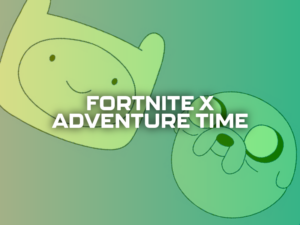A global phenomenon: Fortnite
Since its launch in 2017 by Epic Games, Fortnite has rapidly become a cultural and gaming juggernaut. The game’s hybrid mechanics, seamlessly blending a battle royale game with creative building features, and its evolution as new content and partnerships are constantly integrated become natural; co-op survival quickly was thus altered with the advent of a Battle Royale mode that was supposed to put Fortnite on the global stage.

Fortnite in Esports: A Giant in the Making
An Introduction to Fortnite Esports
After the Battle Royale took off, the game had become serious about competing hardly enough. In 2018, Epic Games made its commitment to esports clear when it released the $30 million Fortnite World Cup, redefining the destination of gaming history by elevating Fortnite as a serious contender in the esports arena itsel
Competitive Formats and Gameplay
While Fortnite esports tournaments focus primarily on competitions conducted in Solo and Duo formats, there have occasionally been available public tournaments in the Trios and Squads modes.
What differentiates it is the same mechanic that makes it casual: building. Therefore, the steep learning curve associated with building in Fortnite and the situation of high-risk decision-making adds complexity that other competitive titles don’t have.
These tournaments usually take place in both online and in-person ways; they use a points-based scoring system that grants points for eliminations, placement, and general consistency. The format allows for balance between the “aggressive” playstyle and survival strategies to benefit a range of competitors.
Fortnite World Cup (2019)
The Fortnite World Cup, essentially, established a new bar for esports, having been endowed with a prize pool worth $30 million. The event’s weighty competition featured Solo and Duo categories, taking place at the Arthur Ashe Stadium, in New York City.
Had it not been for “Bugha”, Kyle Giersdorf, victory would not have been achieved in that Solo Championship, with him pocketing $3 million worth of luck.
The World Cup absorbed the astonishing appeal of the game in a global curriculum in which participants came from 30+ nations with millions of viewers online. Fortnite’s reputation in esports was reinforced.
The Fortnite Champion Series (FNCS)
Launched in 2019, FNCS is Fortnite’s flagship competitive series held every season where players of all ranks fight for sizable prize pools. Over the years, FNCS has undergone various changes, such as Trios and Zero Build modes, all thanks to the ongoing change in the game.
Third-Party Tournaments
Several others like Dreamhack and ESL also host Fortnite tournaments, adding an extra stat to the competitive arena among them. These types of events would usually throw in unique rulesets, akin to thematic loadouts or region-specific competitions.
The Key Esports Mechanics
What defines Fortnite as an esport is its juxtaposition of mechanical skill, strategy, and creativity. In this exchange, players need to master:
Building and Editing: Being able to build and edit structures quickly for defense or offense.
Rotations: Players must move with the storm when threatening closure while minimizing opponents and maintaining high ground.
Adaptability: Due to the ever-changing state of updates and whatnot, players remain flexible.
The Future of Fortnite Esports
Innovation and Prospects for Competitive Play
Epic Games will continue to refine the competitive ecosystem, introducing new formats into the competition, like Zero Build tournaments. This mode, in which building mechanics have been removed, has drawn acclaim for being fairer and for simplifying the viewing experience.
It would be a rather big understatement to suggest that, since it’s designed on Unreal Engine 5, improvements in graphics and gameplay mechanics will add a richer experience to any type of gameplay for casual or competitive play.
Grassroots and Collegiate Esports
The rise of college and high-school Fortnite tournaments suggests a growing farm system for future talent. These grassroots initiatives could just keep the competitive scene alive within the game.

Beginnings of Broader Impact on Esports
Mainline Recognition
Fortnite has been a game-changer in mainstreaming esports. The high-profile tournaments and celebrity-backed competitions have opened a competitive gamer to a whole new audience.
Influence over Development
Fortnite’s success inspired others to make hybrid gameplay mechanics and experiment with live service models. It has set a benchmark in marrying gaming with entertainment and community engagement.
Challenges and Criticism
However, the journey of Fortnite esports has met its challenges. Frequent game patches, meta shifts, and the introduction of new items or mechanics keep shifting the competitive equilibrium.
The critics counter that the skill-requiring building mechanics make the game worlds less approachable to the casual viewing audience than other esports such as CS: GO or League of Legends. Esports in the Future of Fortnite
Fortnite Overview
As discussed above, Fortnite was first launched in 2017. It aimed to do things differently. In a time where most multiplayer games were majorly just a copy of the other, Fortnite changed the game.
It received an excellent response from the audience because it was innovative. It didn’t try to be realistic or anything. The art style was and is still very cartoonish, even though the visuals now look better than ever thanks to Unreal Engine 5.
Nonetheless, Fortnite has made a serious name for itself. It continues to be big and will evolve as fans are essentially the ones that drive the game. So, it feels very personal, and despite being highly competitive, caters to the casuals as well.
The game has gotten massive since its release. It is not only available on PC via Epic Games, but can also be played on PlayStation 4, and 5, Xbox One, Xbox Series X|S, Nintendo Switch, MacOS, and even IOS and Android.
Fortnite Gameplay and Mechanics
Fortnite takes 100 players and drops them onto a dynamic map biggest in all Battle Royals- where they run around collecting resources, building structures, and shooting at each other.
Building, the most iconic mechanic of the game allows the players to make defensive walls, ramps, or even great structures in real-time, bringing a unique depth of strategy unseen across other battle royale titles. Players can thus choose to engage in a solo, duo, or squad match, each demanding different strategies and team coordination.
Moreover, there are an array of limited-time modes that act to add new spins to said core gameplay. In addition, in 2018, Fortnite Creative was introduced, where players can create their own maps or game modes, widening the design possibilities of the game.
A Cultural Icon
The other thing making Fortnite stand apart is the weaving in of pop culture. From solo concerts by artists like Travis Scott, Ariana Grande, Marshmello, and more to collaboration with franchises like Star Wars, Marvel, and Naruto, the game has had it all.

Fortnite transcends gaming in the entertainment and lifestyle arena. Seasonal events and methods propagate the in-game storyline of the game, drawing in players and keeping the community hum with various speculations.
Fortnite Skins
Its item shop is one of the most interesting thins about Fortnite. You can buy the Battle Pass to unlock many rewards which is a great deal. But so many collaborations also mean the skins in Fortnite are wonderfully diverse.
You can find all the original ones, but then there are also ones from TV shows, games, showbiz, movies and much more.
Community and Ecosystem
A Player-Driven Economy
Fortnite’s economy sustains itself by providing an extensive in-game economy riddled with cosmetics, such as skins, emotes, and battle passes. Non-pay-to-win that generates billions in sales empowers players to express their unique personalities.
Streamers and Content Creators
The success of Fortnite is primarily based on content creation, wherein high-profile streamers such as Ninja, Tfue, and SypherPK have contributed largely to creating an audience for the game. Twitch and YouTube are other outlets teeming with gameplay, tutorials, and highlight reels.
Accessibility and Inclusivity
One of Ninja’s great strengths is accessibility-it is available on multiple platforms, including PC, consoles, and mobile devices, often with cross-play enabled. Epic Games also invests a fair amount of time in building opportunities through events such as Fortnite Creative Mayhem to foster inclusivity in the community.
Conclusion
Next to a few challenges, Fortnite remains one of the defining pillars in the gaming sector and will continue to shape the future of casual and competitive games. With its focus on evolution and inclusivity, Fortnite becomes one of those shining examples of what innovative video gaming can do in That pursuit of culture.
Based on the current player community and the sentiment from the player base around it, the game will undoubtedly continue to thrive. Right now, we are in Chapter 5 Season 4. Leaks have already confirmed a few plot points for the next chapter.
The competitive side of Fortnite doesn’t seem to be stopping any time soon. With over 34 billion streams, it is ever so popular among fans, and it caters to the younger generation new players will continue to flood in.




















